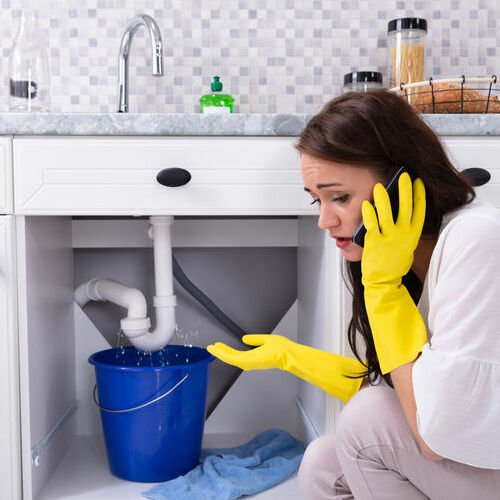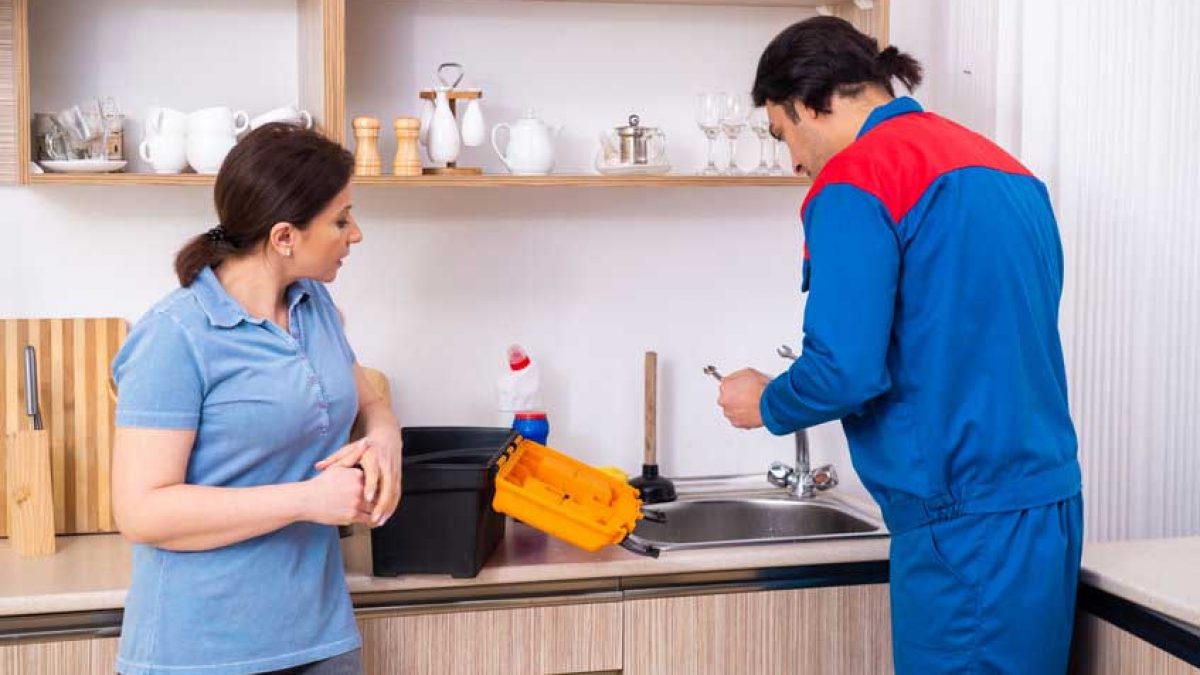Effective Strategies to Resolve Plumbing Issues in Older Homes
Effective Strategies to Resolve Plumbing Issues in Older Homes
Blog Article
We've encountered the article involving Common Plumbing Challenges In Old Buildings down the page on the net and believe it made perfect sense to quickly share it with you over here.

Older homes commonly include appeal, character, and background, however they can likewise bring a host of pipes problems. Whether you're handling maturing pipes, low water stress, or leaks, recognizing exactly how to deal with these usual issues is essential to keeping a risk-free and functional home. In this overview, we'll explore the normal plumbing obstacles dealt with by older homes and give functional solutions to maintain your pipes in top form.
Recognizing Usual Plumbing Concerns
Aging Pipelines
One of one of the most usual problems in older homes is maturing pipes. Depending upon the age in which your home was constructed, the pipes could be made from materials that have worn away in time, such as galvanized steel, cast iron, or even lead. These materials can wear away, become breakable, or create leaks, causing water damages and potential carcinogen.
Low Water Stress
If you're experiencing low tide stress, it could be because of natural resources, corrosion inside the pipes, or old fixtures that are no longer working successfully. This can be a significant hassle, specifically in areas like showers and sinks.
Dripping Pipelines
Leakages are one more regular problem in older homes, frequently triggered by corroded or damaged pipelines. Even little leakages can bring about substantial water damage, mold growth, and raised water costs if not attended to without delay.
Outdated Fixtures
Obsolete plumbing fixtures such as taps, toilets, and showerheads not only look old yet may likewise be much less reliable, prone to leaks, or inappropriate with modern-day plumbing requirements.
Pipeline Rust
Rust is a typical trouble in older pipes, specifically those made from galvanized steel or actors iron. Corroded pipelines can limit water circulation, create staining, and at some point bring about leaks or pipe bursts.
Examining the Problem of Your Pipes
Checking Noticeable Pipes
Begin by evaluating any type of noticeable pipelines in your home, such as those in cellars, crawl spaces, or under sinks. Seek signs of deterioration, leakages, or corrosion, which can indicate underlying problems.
Looking for Leaks
Look for leaks by examining areas around faucets, commodes, and under sinks. You can additionally check your water meter before and after a period of no water use to detect hidden leakages.
Water Top Quality Screening
Older pipes can influence the top quality of your water. Conduct a water quality examination to look for pollutants such as lead, corrosion, or other pollutants that may be presented by aging pipes.
Solutions for Usual Pipes Issues
Changing Aging Pipes
If your home has old, degrading pipes, think about replacing them with modern materials like copper or PEX. This can be a substantial financial investment, but it will certainly stop future concerns and enhance the safety and integrity of your plumbing system.
Fixing Low Tide Pressure
To fix low water stress, begin by cleaning or replacing old fixtures and getting rid of mineral build-up in the pipes. If the problem lingers, it may be essential to change areas of corroded pipelines.
Repairing and Changing Leaking Pipes
For little leaks, you can use pipeline clamps or epoxy putty as a momentary fix. Nonetheless, it's finest to change leaking pipelines totally to prevent additional damages.
Upgrading Fixtures
Updating old fixtures to contemporary, water-efficient versions can enhance your home's pipes performance and minimize water intake. Look for components with the WaterSense tag for the very best effectiveness.
Dealing with Pipeline Deterioration
If your pipes are rusted, replacing them with corrosion-resistant materials like copper, PVC, or PEX is the best option. Normal inspections and water high quality upkeep can aid avoid further corrosion.
When to Call an Expert
While some plumbing problems can be taken care of with do it yourself services, there are times when it's best to call a professional. If you're handling significant leakages, considerable corrosion, or are unsure about the problem of your pipelines, a licensed plumbing technician can give expert evaluation and fixing.
Preventive Maintenance Tips
Regular Inspections
On a regular basis check your pipes system for indicators of wear and tear. Catching problems early can stop pricey repairs down the line.
Water Pressure Policy
Guarantee your water pressure is within the recommended range to avoid stressing your pipelines and components. A plumbing technician can set up a stress regulator if needed.
Water Quality Maintenance
Install water filters or softeners if your water high quality is poor. This can safeguard your pipes and fixtures from damage brought on by tough water or contaminants.
Proactive Pipeline Substitute
If your home has very old pipes, consider aggressive substitute prior to significant problems occur. This can save you from emergency situation fixings and water damages.
Verdict
Taking care of plumbing issues in older homes calls for a mix of watchfulness, precautionary upkeep, and timely upgrades. By understanding the usual obstacles and understanding when to seek specialist help, you can guarantee your pipes system stays functional and reliable for several years ahead.
9 Common Plumbing Problems in Old Houses
Living in old houses is all about basking in the character of something unique to its time and devoid of the monotony of modern house design. They re appealing for many reasons, namely their appearance, the superiority of materials used in construction, and they re cheap.
The likelihood, however, of something going horribly wrong with the innards of a home built a while ago is much higher than something built in the last 20 or fewer years. Often, you re going to end up paying up for repairs on an old house.
It could be doors and windows not shutting all the way, problems with your roofing, or a shoddy furnace. It could be a lot of things, but one of the more common problems in older homes is with the plumbing.
In this post, we re going to talk about the most common plumbing issues in older homes and how to avoid them. It s time to make yourself aware of these potential issues before it s too late. Let s get started.
Outdated Fixtures
It is true that older fixtures are often made of more solid and overall better materials than their modern counterparts. However, they ll eventually erode with time and inevitably start causing problems.
Handles break, washers and valves deteriorate, causing leaks and nasty smells. If you ve got all original valves, spigots, faucets, and handles in your home, you may way to consider getting them replaced before anything bad happens.
Bad Repairs Over the Years
Unfortunately, your plumbing goes as far as the plumbers that have worked on your home in the past. You re at the mercy of whatever repairs have been done, good or bad. The older your home, the more likely it is that it s had large scale plumbing repairs.
With something particularly old, your house will have had multiple repairs by multiple plumbers and it s impossible to know the amount of care your pipes got. It s probably a good idea to have a good, experienced plumber come in when you buy an old house to diagnose any poor repairs that may have occurred.
Sewer Lines
This isn t really a problem with your old house, but cracked and broken sewer lines could be at the root of your plumbing issues.
Sewer lines are supposed to take away the black and grey water from your drains into the sewer main, and on to the municipal treatment plant. Because sewer lines are always wet, they tend to attract tree roots, which can crack and clog the sewer line.
Shifting Pipes
Pipe bellies can become an issue, especially in old houses. Pipes buried underneath your house or encased in concrete slabs are at the mercy of an old home s gradual movement over the years. It sounds scary, but it happens.
If the pipes happen to shift downwards, they create a belly , which is a negative slope that can restrict the flow of water or create pools that can end up accumulating waste. This can cause clogs and stoppages if left for too long.
Galvanized Piping
If you notice issues with your water pressure, quality, or notice any discoloration, it could be a result of corroding pipes or a release of iron through the pipes. Galvanized pipes are made of iron and then covered with zinc, which can erode over long periods of time.
Lead Service Lines
If your city uses lead service lines and you have galvanized piping, you might run into problems. A service line brings the water from the water main to your home, but if they re being repaired, an influx of lead could appear in your water.
To avoid any water contamination, you should have a plumber examine your pipes and water to determine if there s too much lead. You may have to install a water filtration system in old houses.
Polybutylene Piping
Polybutylene piping was an affordable type of piping used from the 70s until the 90s but isn t accepted by US building codes anymore. It reacts poorly with the oxidants in water and breaks down slowly over time, which has led to entire system failures in some homes.
If you move into a home built during this time, it s a good idea to have a plumber come in and check to see if these pipes are still installed. You may have to get your entire system replaced, if so. It s better to do this now than to potentially cause large scale damage to your home and need your pipes replaced anyways.
Drain Issues
30 plus years of scum, soap, and dirty water will take its toll on your home s drains. Your toilet, as well as your kitchen and bathroom drains, are susceptible to clogging. When you buy an old home, you won t know what s been washed down the drains before you.
If you notice any water backups in any of your sinks, a backed-up toilet, or any strange smells coming from anywhere, then you should get a plumber in to check your drains. Odds are, there s a build-up of debris that will need to be cleared in most old houses.
Better To Be Safe Than Sorry
When you move into an older home that you suspect might have some issues, it s probably a good idea to get a quality plumber in to inspect your pipes, drains, and fixtures. Getting a clean bill of health will give you peace of mind and small fixes now will save you money by avoiding any emergencies down the road.
https://johntheplumberkansascity.com/9-common-plumbing-problems-in-old-houses/

Do you like reading up on Main Plumbing Issues Found in Old Houses? Write a short review down the page. We'd be glad to find out your ideas about this write-up. We hope to see you back again soon. Enjoyed our blog entry? Please quickly share it. Help others discover it. We appreciate reading our article about Common Plumbing Problems in Older Homes.
Course Detail Report this page